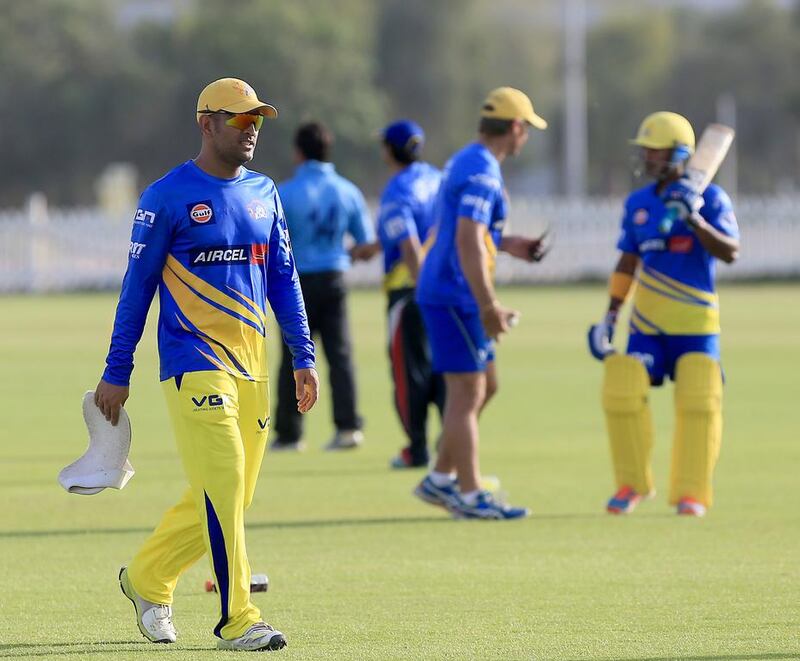When I started my international career, people during the overseas tours used to ask me where I came from. I would first say India, then Jharkhand and then Ranchi. The next question invariably was, “Where is Ranchi”?
I had to explain in different ways by saying, “It’s near Kolkata, near Jamshedpur, where Tata [probably India’s best-known global brand] originated. It is India’s richest state in terms of minerals,” MS Dhoni once said about his hometown.
When Dhoni made his first-class debut in 1999/2000, Ranchi was still a part of Bihar, and ignored perhaps by most of the world.
A year later, the state of Jharkhand came into existence, with Ranchi as its capital, and a fiery young cricketer, who would go on to be India’s cricket captain, was putting the town on the world map.
Fourteen years later, Ranchi’s transformation from a dusty town and a cricketing outpost to a city with a number of public-sector enterprises, industries and an upcoming sporting lineage, playing host to the opening match of the India leg of the 2014 IPL season, doesn’t go unnoticed.
Until recently, Dhoni’s presence in Ranchi meant the Indian team was enjoying a rare break from international cricket. Today, the city is firmly on India’s cricket calendar after the construction of the state-of-the-art Jharkhand State Cricket Association International Stadium, a public-sector undertaking.
Meanwhile, the state’s fortune in India’s domestic championships has gradually improved. Jharkhand won the Vijay Hazare Trophy in 2011, and reached the knockouts of the Ranji Trophy in the 2012/13 season.
And while it is clear Dhoni’s imprints have created a small sporting ecosystem, the emergence of hockey along with cricket has given the city’s sporting landscape a further fillip. Ranchi Rhinos won the inaugural edition of the Hockey India League in January 2013, and the success has brought with it the money and the inclination to develop the state’s sporting infrastructure.
Dhoni’s influence over Ranchi goes beyond the infrastructure, of course. As you step out of the airport and drive into the city, you see statues and images of Birsa Munda, an activist who fought for the rights of the tribals in the region.
But driving into the heart of the city, it is Dhoni smiling at you from hoardings at every intersection, endorsing brands ranging from electronics to health drinks, menswear to bikes.
Particularly eye-catching are the hair salons, their boards almost a timeline of the various hairstyles of Ranchi’s favourite son over the years.
Despite charming the world with his exploits – lifting World Cups in the 50-over and Twenty20 formats, acquiring fame and eventually stardom – Dhoni’s image of a small-town boy in touch with his roots remains intact.
To the people of Ranchi, he is one of their own. You will hardly ever hear them say “Dhoni”, for it is always “hamara Dhoni” (our Dhoni).
“Shaurya”, his home in Harmu Housing Colony, an upper-middle-class locality, is a bigger cricket landmark than the cricket stadium in Dhurua, a 20-minute drive from the city centre.
Sometimes, in all the adulation, the state team is almost an afterthought, despite its Ranji success; players such as Saurabh Tiwary, Varun Aaron and Shahbaz Nadeem who have followed in Dhoni’s footsteps and are now making their claim on bigger honours, don’t quite inspire the same love.
The city has accepted Chennai Super Kings as its own, and is being spruced up for the team’s “home” game.
Yellow is the predominant colour leading up to the stadium, with posters, hoardings and “whistle podu” banners lining the manicured roads.
The JSCA stadium itself, an architectural masterpiece, with a fresh coat of paint in parts, is ready for the thousands of fans. The blazing sun creates a mirage over the covers placed over the 22 yards, ready for Friday night.
Canopies, grass banks, modern pavilions and an ultra-modern media centre means the fans, players and journalists are well taken care of.
If the city’s first taste of international cricket in 2013, when it hosted a one-day international between India and England, is anything to go by, fans will simply lap up the cricket coming their way.
Since that ODI in January last year, the venue has become a regular pit stop in the cricket calendar. It hosted two IPL matches in 2013, apart from a few Champions League Twenty20 encounters and an ODI in October.
Ticket sales – prices range from 500 to 5,500 rupees (Dh30-335) – have been steady. Temperatures have soared over 40°C and it is barely May, the locals say, but that is unlikely to affect attendance. Everything then points to a near-full house to watch the home hero in action when the IPL caravan rolls in.
Shashank Kishore is a sub editor for Wisden India. Visit wisdenindia.com or follow them on Twitter @WisdenIndia.
sports@thenational.ae
You can also follow our sports coverage on Twitter @SprtNationalUAE





